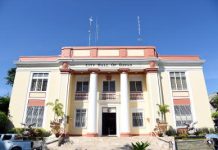Until Ednar Dayanghirang mentioned it at the Kapihan sa Davao, I thought that the performance governance system (PGS) being pursued by the Philippine National Police to reform itself was a dead duck in the water.
You see, the program actually started way back during the Aquino administration when the police organization has figured into one controversy after another.
This is was the time when the drug menace that unraveled itself into monstrous proportions during the Duterte administration was kept under tight lid.
If we got the drift then, a fresh wind of change has actually begun to envelop the entire police organization in a bid to bring about meaningful change and to undo its reputation as one of the most corrupt agencies of government.
The bad eggs still remain, I was told, but it seemed that they constituted a negligible percentage although it was their deeds that seemed to get splashed into the front pages time and again.
What did not get into the news was a nationwide program to transform police units into instruments of good governance by being initiated into the performance governance system, or so that was the impression I gathered then.
So on invitation of one regional command, I accepted, like Dayanghirang for this region, the chance to be a member of its advisory command. In between my schedules, I attended several meetings that examined the PGS programs of some municipal and provincial commands.
One of the highlights of this membership was a trip to Camp Crame itself where the top brass of the PNP and the regional advisory councils from all over the country met as one to tackle the PGS of each region.
I recall that one of the PGS’ top advocates was then Deputy Director General Marcelo Garbo, Jr. himself who spoke lengthily and with authority on the subject. Somebody told me he was actually one of those who pushed strongly for its implementation.
I must say I was impressed.
It was not a new system. In fact it is practiced by some of the world’s successful corporations, including the Royal Canadian Mounted Police as I adverted to previously in this space.
Several Philippine corporations have embraced the system and that 10 local government units were initiated into it with San Fernando City (Pampanga) leading the pack for having institutionalized the system
The PGS as it is known speaks of a dashboard that defines the LGU’s or the police station’s mission and vision as well as its objectives, primary drivers (or major activities) and secondary drivers (related activities) to reach its goals of helping provide a community that is safe for people to live, for business to thrive, for students and children, and for people to visit.
The simple analogy with the dashboard was provided by S/Supt. Robert G. Quenery. He said true enough: “One cannot just drive a vehicle from one point to another without knowing if the battery is okay, the motor has oil, the tank has gas, the brake is working, the carburetor has water, and the lights are working (not to mention the capability of the driver).”
How an LGU or a police unit incorporates all these and ensure that “all systems are going” maybe referred to as the scoreboard. And to insure no one gets astray, there is also need for Customer, S.W.O.T and GAP analyses.
The end-result is that once institutionalized, the community gets to be the beneficiary as safe for people to live in, for business to thrive and for people to visit.
But then work intervened so I was not able to get abreast of how it turned out with that regional command.
With Duterte in power, I surmised the PGS has proved irrelevant. Well as it turned out, it is now the right program at the right time.
Garbo by then has since retired although not under favorable circumstances as he was among the first PNP officials to be linked by Duterte to the drug trade. The PNP’s task is to prove that the PGS can be an instrument for meaningful change indeed.







